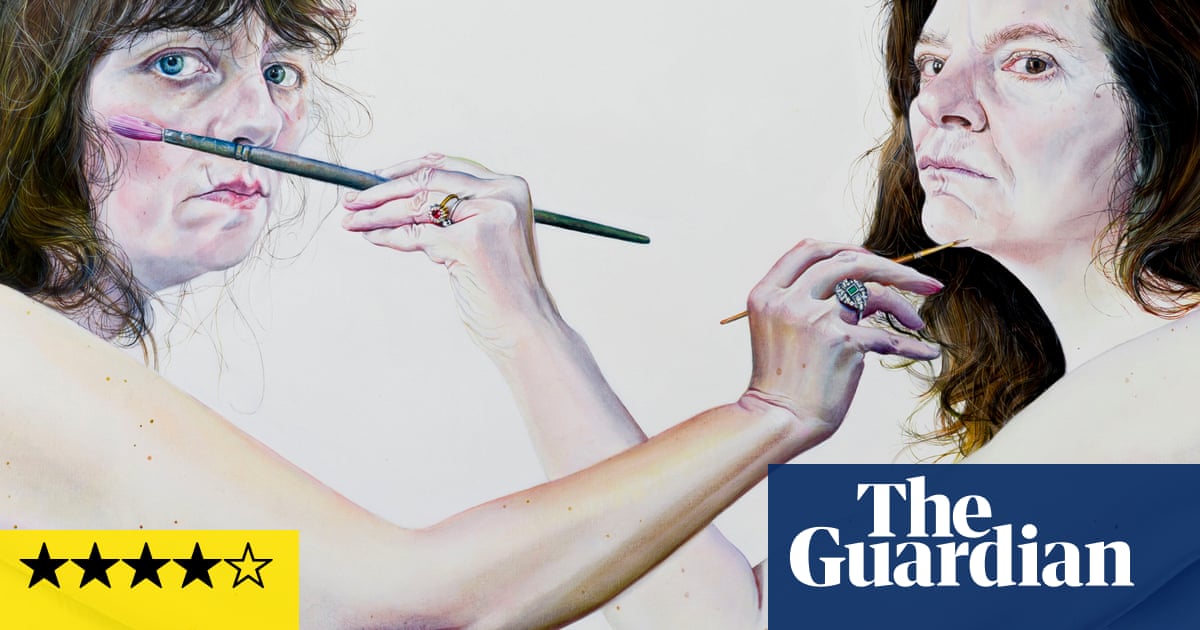Standing in front of Frank Auerbach’s quietly harrowing charcoal portrait of Leon Kossoff and Kossoff’s own heavily textured, dour portrait of Auerbach, I felt as if I was caught between the gazes of the two artists. Caught in the balance of their stares, seeing the way each sees the other, I was both implicated and invisible.
Moments like these are the most intimate and affecting in Pallant House’s new exhibition of portraits of artists by artists. When a portrait of one artist by another is hung beside their portrait of the other, we find ourselves caught between them. There are many pairs of lovers featured, including Matthew Smith and his mistress Vera Cunningham orLucian Freudand Celia Paul, as well as works by friends such as Auerbach and Kossoff or Nina Hamnett and Roger Fry. In some cases, such as the two paintings by Smith and Cunningham, it’s easy to see how the two artists influenced each other as they found a shared visual language of heavy, impressionistic brushstrokes and a dark, jewel-like palette. In others, the aesthetic distinctness is what draws you in.
There are also delightful little moments in which multiple paintings of the same artist are hung together, all painted by different people. The exhibition moves chronologically from the turn of the 20th century to the present, and there is a series of portraits of Walter Sickert at the start of the exhibition by three different women in his life: his friends Sylvia Gosse and Nina Hamnett, and one of his wives, Thérèse Lessore. Each portrays him entirely differently: Gosse shows him standing in profile, his middle-aged potbelly declaring his prosperity; Hamnett shows only his face, gazing directly at her from under the brim of his black hat; Lessore shows him from the back, the profile of his face hardly legible. The complexity of trying to convey a likeness in a portrait is profoundly evident when confronted with a group like this. If these women who knew Sickert so well each paint him so differently, what was he really like? Perhaps only via many representations can the real man begin to emerge.
Moving from the bohemian London of early 20th century through pre-war modernism and eventually to pop art, the London School, the YBAs, and up to the present, this exhibition makes a compelling case for a story of British modern art that is communal and collaborative. The interlocking circles of portraits that emerge make it obvious that the avant garde movements that evolved in and out of existence throughout 20th-century Britain were as social as they were professional. Walking through the galleries feels like drifting through a cocktail party, going from group to group of interesting, chatty friends – much like the scene of a Slade tea party painted by Seóirse Macantisionnaigh.
There is rivalry and darkness here, too – husband and wife John Bratby and Jean Cooke’s portraits of each other are hung on either side of a doorway, which neatly emphasises the antagonism between them. Sickert’s portrait of unhappily married couple Roald Kristian and Nina Hamnett oozes with their apathy for each other, and Cedric Morris’s remarkably unflattering portrait ofBarbara Hepworthcan readily be read as a document of his dislike for her.
The exhibition is the last in Pallant House’s ambitious trilogy of exhibitions on modern British art – exploring first still life, then landscape and now portraits. There are moments when the exhibition feels like it belongs at the National Portrait Gallery, as it can feel it is tracing celebrity rather than aesthetic exchange. But for the most part, it triumphs in crafting a cohesive story of visual, and literal, conversations between artists on the canvas. I wanted it to be bigger, and kept thinking of artists who I felt were missing, which is a sign of how effective the curatorial construct is: it welcomes a way of considering the history of art via relationships, which is inherently expansive. There are always more artists to include.
The contemporary section of the show is the biggest and most broad. It includes portraits of real-life friends, including a wonderful group of three iconic works by the artists Chantal Joffe and Ishbel Myerscough, who have been painting portraits of themselves together since their student days in Glasgow. It also includes portraits exploring relationships between artists of the present with those of the past. Gillian Wearing’s photograph of herself as Georgia O’Keeffe, for example, or Caroline Coon’s reimagined painting of the pop artist Pauline Boty, widen the notion of a relationship to include transhistorical, imagined but still intimate relationships between artists through time.
The exhibition has a circular route, so it both opens and closes with Lubaina Himid’s painted wooden figures of female artists from the past and present, including Élisabeth Vigée-le Brun, Frida Kahlo,Bridget Riley(represented entirely by stripes), and Himid’s real-life friend, Claudette Johnson. The life-sized women are a fitting encapsulation of the exhibition’s ethos: that artists see each other with profound depth, and that art itself is born out of intimacy and influence.
Seeing Each Other: Portraits of Artists is at Pallant House Gallery, Chichester,17 May to 2 November
